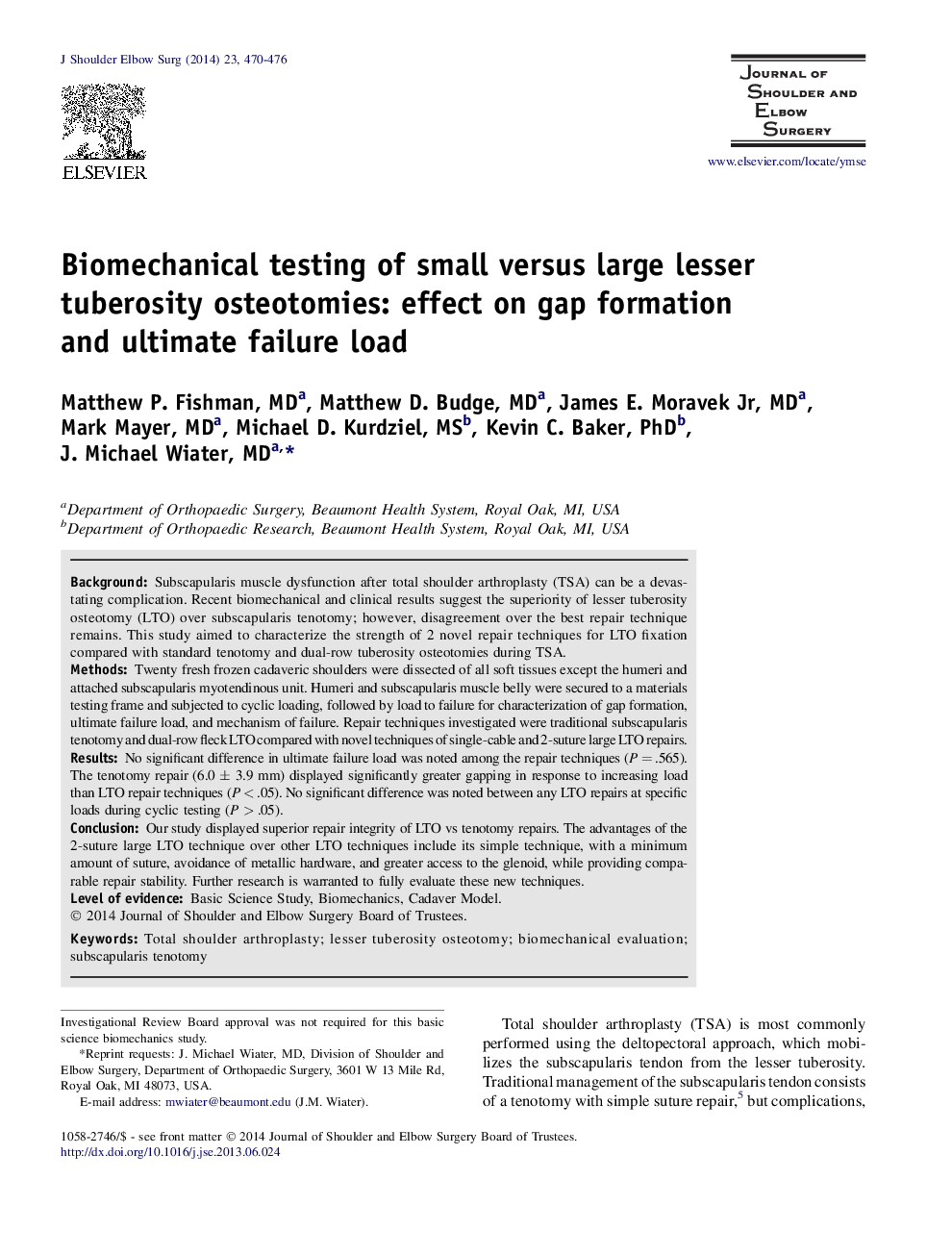| کد مقاله | کد نشریه | سال انتشار | مقاله انگلیسی | نسخه تمام متن |
|---|---|---|---|---|
| 6211048 | 1267012 | 2014 | 7 صفحه PDF | دانلود رایگان |
BackgroundSubscapularis muscle dysfunction after total shoulder arthroplasty (TSA) can be a devastating complication. Recent biomechanical and clinical results suggest the superiority of lesser tuberosity osteotomy (LTO) over subscapularis tenotomy; however, disagreement over the best repair technique remains. This study aimed to characterize the strength of 2 novel repair techniques for LTO fixation compared with standard tenotomy and dual-row tuberosity osteotomies during TSA.MethodsTwenty fresh frozen cadaveric shoulders were dissected of all soft tissues except the humeri and attached subscapularis myotendinous unit. Humeri and subscapularis muscle belly were secured to a materials testing frame and subjected to cyclic loading, followed by load to failure for characterization of gap formation, ultimate failure load, and mechanism of failure. Repair techniques investigated were traditional subscapularis tenotomy and dual-row fleck LTO compared with novel techniques of single-cable and 2-suture large LTO repairs.ResultsNo significant difference in ultimate failure load was noted among the repair techniques (P = .565). The tenotomy repair (6.0 ± 3.9 mm) displayed significantly greater gapping in response to increasing load than LTO repair techniques (P < .05). No significant difference was noted between any LTO repairs at specific loads during cyclic testing (P > .05).ConclusionOur study displayed superior repair integrity of LTO vs tenotomy repairs. The advantages of the 2-suture large LTO technique over other LTO techniques include its simple technique, with a minimum amount of suture, avoidance of metallic hardware, and greater access to the glenoid, while providing comparable repair stability. Further research is warranted to fully evaluate these new techniques.
Journal: Journal of Shoulder and Elbow Surgery - Volume 23, Issue 4, April 2014, Pages 470-476
